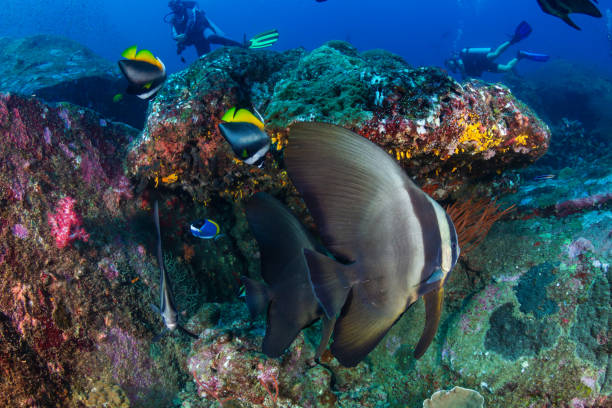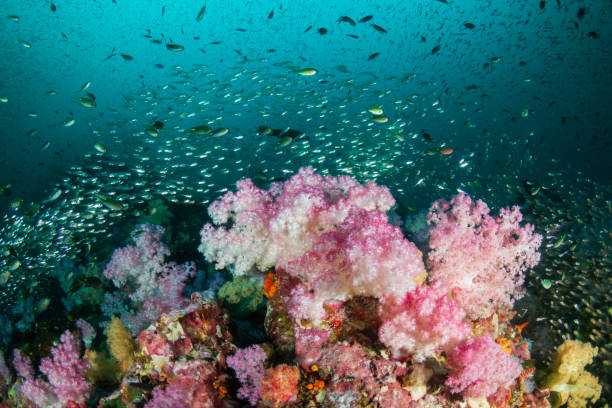Koh Bon is a small island located in the Andaman Sea, approximately 20 kilometers north of the Similan Islands and around 80 kilometers northwest of Phuket, Thailand. It is a popular dive site known for its diverse marine life and thrilling underwater experiences. Here’s some information about diving at Koh Bon:
- Location and Topography: Koh Bon is a granite island that rises from the depths of the sea and is surrounded by crystal-clear waters. The island is relatively small, and its main diving attraction is a submerged ridge that extends from the island. The ridge features several dive sites with varying depths and underwater landscapes.
- Marine Life: Koh Bon is famous for its encounters with majestic manta rays. These gentle giants are frequently spotted in the area, especially between February and April when plankton-rich waters attract them. Divers can witness the impressive spectacle of these graceful creatures gliding through the water. In addition to mantas, divers at Koh Bon can also spot other marine life, including reef sharks, barracudas, trevallies, and various species of colorful reef fish. The coral formations and rocky outcrops around the island provide a habitat for diverse marine species.
- Diving Conditions: Koh Bon offers favorable diving conditions, with visibility often ranging from 15 to 30 meters (50 to 100 feet) or more. The water temperature is typically around 27-30°C (80-86°F), making it comfortable for diving with a wetsuit or thin rash guard. Currents can vary, but they are generally mild to moderate, suitable for divers of various experience levels. However, it is recommended to have some diving experience to fully enjoy the site.
- Diving Highlights: The main diving attractions at Koh Bon are the manta ray encounters. Divers often have the opportunity to get up close to these gentle giants, watching them glide gracefully through the water. The dive sites around the ridge offer opportunities for exploring underwater caves, swim-throughs, and beautiful coral formations. The marine life diversity and the chance to encounter larger pelagic species make Koh Bon a thrilling destination for underwater enthusiasts.
- Accessibility: Koh Bon is primarily visited as part of liveaboard diving trips departing from Phuket, Khao Lak, or the Similan Islands. The island is not inhabited, and there are no accommodations available. Liveaboards offer the advantage of spending multiple days in the area, allowing for more dives and the opportunity to explore nearby dive sites, such as the Similan Islands and Richelieu Rock.
- Season and Accessibility: The best time to visit Koh Bon is during the high season, which typically runs from November to April when the weather conditions are more favorable, and visibility is generally better. The manta ray encounters are most frequent between February and April. Diving at Koh Bon is accessible to divers with intermediate to advanced experience levels, as well as those participating in liveaboard trips.
Diving at Koh Bon provides an exciting opportunity to encounter magnificent manta rays and explore the underwater wonders of the Andaman Sea. It’s important to dive with a reputable dive operator that follows sustainable diving practices and respects the marine environment. By doing so, you can have a memorable diving experience while contributing to the conservation of this precious dive site.


